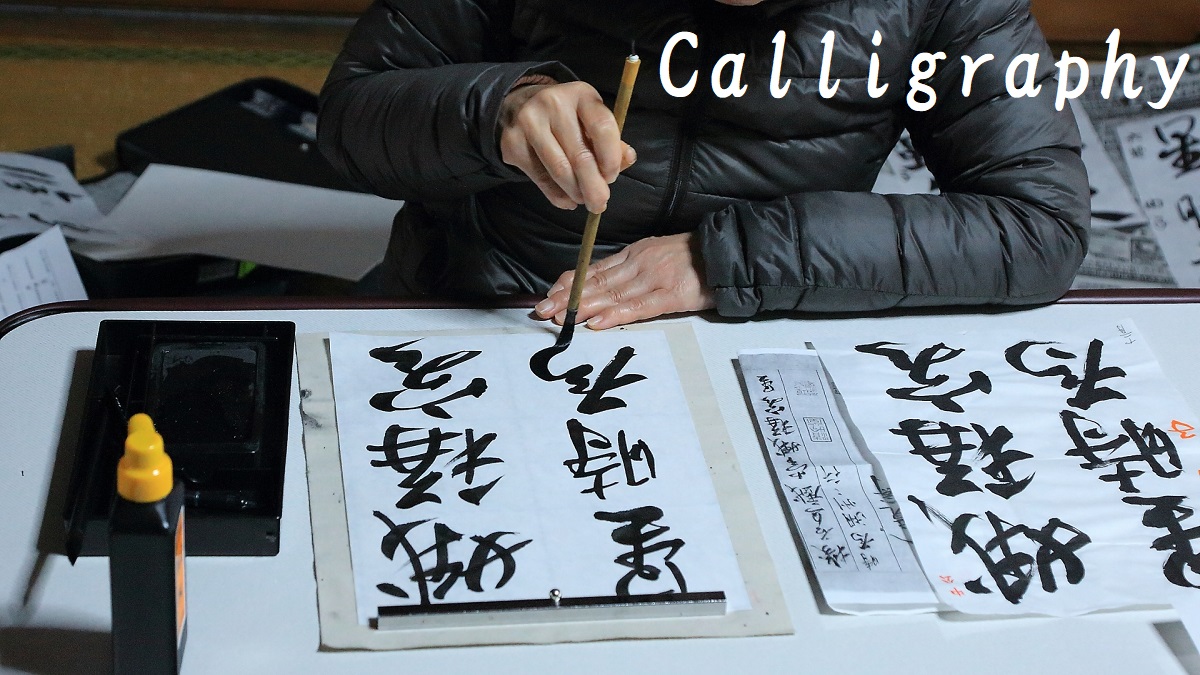Japanese calligraphy
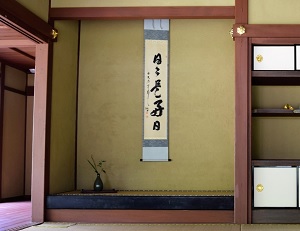
Japanese characters are based on "kanji" characters introduced from China around the 5th century.
("Kanji" is translated as "Chinese character" in English.)
In Japan, "hiragana" and "katakana" for Japanese language were invented from kanji characters between the 9th to 12th centuries.
Of course, now, these characters are written with pencil, ballpoint pen, and various writing tools on a daily basis.
But, these characters has been written with ink-filled brush historically.
Writing characters is a practical work.
But, the writing with brush requires concentration.
Therefore, it had developed from ancient times that the characters are written beautifully and artistically.
That is the art of calligraphy.
Needless to say, the characters written with brush are much larger than the ones written with the other writing tools.
And the thickness of the line can be changed.
There are several thousand kanji characters which are commonly used.
Each kanji character has any meaning.
Therefore, the form of each kanji character is the subject of art.
Kanji characters are basically written vertically.
So, many artworks of calligraphy are written vertically.
Some artworks are written many characters in a sheet, but some works are written only one character.
Some works are written in standard style of character, but some works are written in cursive style.
We can find some modern works like abstract picture.
Tools for calligraphy
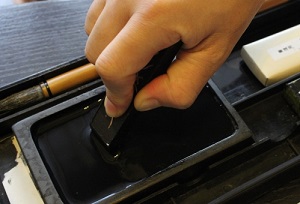
Making sumi
- Inkstone : It's a black stone on which sumi-ink is made.
It is called "suzuri" in Japanese.
Most inkstones have a flat surface and a dent on an edge.
A little water is put into the dent, and sumi-ink are made by grinding an sumi (ink-cake) with the water on the flat surface. - Sumi (Ink-cake) : Sumi makes black ink on a inkstone.
Sumi is like a very solid crayon, and it is produced by solidifying soot with glue.
By grinding the sumi many times, sumi-ink becomes thick and black. - Ink brush : It's a brush to write characters, and it is called "fude" in Japanese.
There are various sizes of brush in accordance with use.
Most brushes are pointed to write beautifully and easily.
Styles of characters
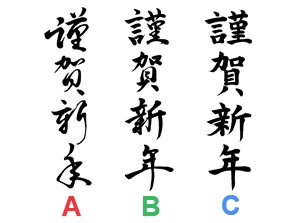
A: Sosho, B: Gyosho, C: Kaisho
There are some styles to write Japanese characters.
Except for a few styles of classic Chinese characters, the following three styles are mainly used.
- Block sprict (Kaisho, 楷書)
It is the most basic and legible style, and the real form of the character is written accurately.
Each straight line, curve and dot in the character is written orderly with good balance. - Semi-cursive script (Gyosho, 行書)
After writing a line of the character, the brush is moved to the starting point of the next line smoothly.
It is a kind of cursive writing, but the form of the original character remains. - Cursive script (Sosho, 草書)
Each character is deformed simply and is written continuously.
And, when the characters are written vertically, the characters are often connected.
To write a character, the writer must learn the scripts of the historical deformed character.
So, it is difficult for ordinary people to read the deformed characters.
Japanese people learn and exercise the calligraphy in the second half of elementary school and junior high school.
In elementary school, the writing by Kaisho (Block sprict) is taught.
In junior high school, the writing by Gyosho (Semi-cursive script) is taught as the develop style.
Writing by Sosho (Cursive script) is very difficult.
Ordinary learners of Japanese calligraphy learn Sosho by copying from various examples.
Calligraphy in daily life of the Japanese people
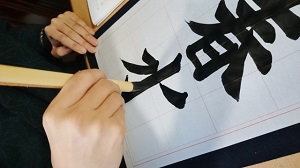
Japanese people learn and exercise the calligraphy in compulsory education.
Of course, not all students can write beautifully.
But, calligraphy is a requirement of Japanese people.
Usually, we are enough to write with pencil, mechanical pencil or ballpoint pen.
But when we attend a wedding or funarel, we write own name on the visitor's book and envelope for gift with brush and sumi-ink as a matter of courtesy.
Some people write a letter with brush and sumi-ink.
Of course, several people use the sumi-ink made on an inkstone.
But, recently convenient "Fudepen" also are widely used.
"Fude" means "brush".
It is an ink brush containing sumi-ink, and we can use it like ballpoint pen without inkstone.
In any case, the person who can write beautifully with brush is implicitly respected.
Seeing art of calligraphy
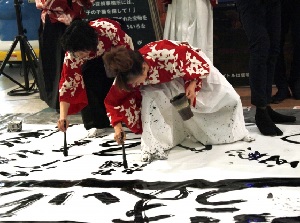
Calligraphy Performance
In main museums of art, we can find few works of calligraphy.
Instead, we can find old works in many museums of history.
Usually modern works are sometimes exhibited for a limited time only in several galleries.
Recently, "Calligraphy Performance" is sometimes held as event.
The performers write characters with a big brush like broom on a huge paper with several meters on the floor, dancing to the music.
The performers are commonly the young members of calligraphy club in high school or university.
The performance is attractive, and the complete artwork is beautiful.

